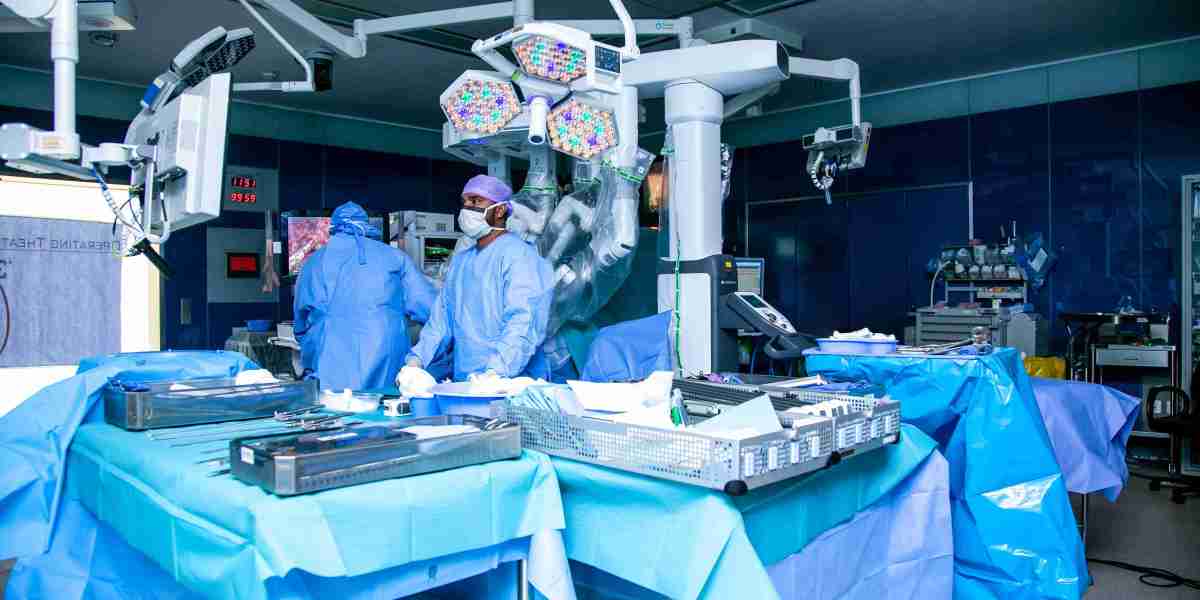The cardiac surgery devices market has witnessed substantial transformation in recent years due to advances in technology, increased prevalence of cardiovascular diseases (CVDs), and rising demand for minimally invasive surgical procedures. This dynamic growth trajectory reflects the industry's effort to enhance patient outcomes while reducing procedural risks and recovery time.
Technological Advancements Driving Market Growth
One of the major driving forces behind market developments is the emergence of innovative technologies, particularly in robotic-assisted and minimally invasive surgery. Devices such as advanced heart-lung machines, surgical ablation systems, and transcatheter heart valves have revolutionized cardiac procedures by improving precision and reducing complications. Robotic systems like the da Vinci Surgical System have been increasingly adopted for cardiac surgery, enabling surgeons to perform complex procedures with enhanced dexterity and accuracy through smaller incisions.
Similarly, 3D imaging and real-time intraoperative monitoring have significantly improved the success rate of surgeries by providing detailed visualization of the heart’s anatomy. These technological strides are enabling faster procedures, less trauma to surrounding tissues, and quicker patient recovery, driving demand from healthcare providers and patients alike.
Rising Cardiovascular Disease Burden
Globally, cardiovascular diseases remain the leading cause of mortality, accounting for approximately 17.9 million deaths annually, according to the World Health Organization. This growing burden has resulted in a higher number of surgical interventions, boosting demand for cardiac surgery devices.
As aging populations increase, particularly in developed economies, the incidence of heart conditions such as coronary artery disease, valvular heart disease, and arrhythmias is rising. This demographic shift has directly influenced the uptick in surgeries such as coronary artery bypass grafting (CABG), valve replacements, and cardiac ablations, consequently propelling the demand for sophisticated surgical devices.
Shift Toward Minimally Invasive Surgery
Traditional open-heart surgeries are increasingly being replaced by minimally invasive procedures due to their numerous benefits, including reduced hospitalization, lower risk of infection, and faster recovery. Devices enabling minimally invasive techniques, such as transcatheter aortic valve replacement (TAVR) systems and endoscopic vessel harvesting systems, are gaining traction.
The trend toward minimally invasive cardiac surgery is also encouraging manufacturers to innovate and invest in device refinement, making procedures safer and more accessible. Companies are focusing on compact, user-friendly designs and incorporating AI and machine learning for better decision-making and automation during surgeries.
Regulatory Approvals and Strategic Collaborations
Regulatory bodies such as the U.S. FDA and the European Medicines Agency play a pivotal role in shaping market dynamics. The recent surge in approvals of novel cardiac devices has significantly accelerated the pace of market expansion. For example, recent approvals of next-generation TAVR devices and electrophysiology ablation systems have paved the way for broader clinical use.
Additionally, strategic partnerships and acquisitions among key players are reshaping the competitive landscape. Collaborations between medtech firms and healthcare providers are fostering R&D efforts, while mergers and acquisitions are enabling companies to expand their product portfolios and market reach. Notable developments include partnerships for AI-driven surgical planning and acquisitions aimed at integrating diagnostic and therapeutic capabilities.
Regional Insights and Market Challenges
North America remains the leading market due to its advanced healthcare infrastructure, favorable reimbursement policies, and high adoption of novel technologies. However, Asia-Pacific is projected to witness the fastest growth owing to rising healthcare expenditures, increasing awareness of cardiac health, and the expansion of private hospital chains.
Despite the optimistic outlook, the market faces several challenges. High costs of advanced cardiac surgery devices and procedures may limit accessibility, especially in low- and middle-income countries. Moreover, stringent regulatory processes and the need for skilled professionals to operate sophisticated equipment may hinder rapid adoption.
Future Outlook
Looking ahead, the cardiac surgery devices market is expected to continue growing steadily, driven by ongoing innovation, increasing cardiovascular disease prevalence, and the global push for better surgical outcomes. Emphasis on AI integration, remote monitoring, and personalized medicine will likely shape the next phase of evolution in this critical healthcare sector.




